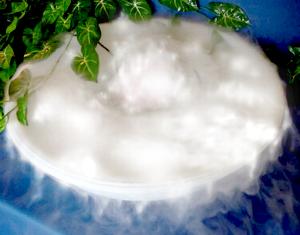Keeping it simple...So what is needed to proof Meyer's concept?
What is his concept? Higher on the voltage lower on the amps..
Ok, So what is voltage? Uhh a potential difference..uhh felt by 2 plates going closer and closer to eachother..uhh and the higher the voltage and the lesser the gap or the resistance..the earlier the gap is breached and the current can flow in between the plates..
Ow..ok..is voltage more then that or is that all it is? Well..as everything in this universe, it must also have a frequency, a vibration. AC has a clear frequency, but does DC have some or can we put it in? And did Meyer do anything with frequency?
Is there any other side to voltage being overlooked here? You can't say it has electrons, at least there not flowing across the gap, they may accumulate in one side and the opposite on the other side.
#1 So with the voltage, we can lower it and higher it.
#2 With the voltage we can vibrate stuff due to its own frequency or the frequency we have put in.
Anyhow, knowing that the normal brute electrolisys is not the way, then brute upping the voltage isn't likely the way.
What can we vibrate? We can vibrate the inner and outer pipes of a meyer cell so they are in tune. We can vibrate the bounds between water.
Or do both at the same time by knowing the frequency of the bounds and making the cell a harmonic brother of that frequency.
Do we have to use the frequency of water bounds? Or do we need the frequency of the outer electrons running around the atoms? And how big should our amplitude be? The bigger the more yield?
What else is there? Frequencies and pulses. So to check if Meyer had a concept here we need to get a "simple" experiment using the frequencies and high voltage and low amps. And knowing the possible frequencies surrounding water into HHO.
If there is no harmonics to be found that yield good production. Then there is no use going on in the electrolisys way.
Proof of concept is needed, in any science, otherwise you have only believe as a driving force forward. If your concept is proofed then you have the evidence that you always can look at and so have the spirit to go further with what is proofed.
Cause you then know it has to work (in further applications) if you understood your concept truly.
And proof here is more yield by hitting the sweet spot in all the frequencies involved.
Question is, do we need all the circuitry to proof the concept?
Thanks Jeff.
Actually this has inspired me into having a go at it myself, I think I'll get busy
building a simple proof of concept cell that which does this very thing........today......
And this is needed, i hope you share the setup with which you work and that it is possible to use the frequency side of electrolyzes.
I've posted a couple off times about a setup that should bring in more bubbles...




